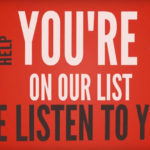Professional Photography – Tips and Tricks
Jeff Philips: Hello, everybody. I’m Jeff Philips. Welcome to this week’s webisode. Every week, I bring in a new business and actually this time I have returning Kevin with Kevin Seifert Photography. Kevin, welcome to the show.
Kevin Seifert: Thank you for having me.
Jeff Philips: Why don’t you just briefly tell everybody what it is that you do?
Kevin Seifert: I’m a professional photographer. I specialize in event photography, green screen photography services. I also do a lot of corporate product and illustration photography.
Jeff Philips: Well today, I want to touch on the corporate side of photography. Last time that you’re here, we gave some consumer tips on how to hold the camera and whatnot. Today, why don’t we talk about head shots. I mean, if someone wanted to do their own head shot, how would they do it and why is it so important?
Kevin Seifert: Well, a head shot is definitely important especially for smaller businesses now. If they’re trying to save a little bit of money, doing it yourself is a good possibility. There are a lot of different tips I could give but there are probably three really key elements to making a good head shot on your first try. The first is to adjust the focal length of the lens. I would say that you want to use a portrait focal length, something between 70 millimeters and 135 would be a medium telephoto lens. That would make a excellent portrait lens. Cell phone cameras make great pictures but their focal length is usually a wide angle lens and they don’t make for good head shots.
Second thing I would look at would be your light source. If you’re just taking them yourself, you don’t need to buy a lot of lights. Just a nice big window light, a soft window light and you also want that light source to be one color source. A window light is daylight balanced. Turn off all the other lights in the area because you’re going to get funky colors.
The third thing to consider is the background. You don’t want to be right next to the background. You want your subject to be at least three feet from the background. You don’t want a brick wall on that background. You want something that’s just a singular color or a muted color, kind of like a cloudy sky looking background.
The common mistake is is to mistake a head shot for a mug shot. A mug shot is right against the wall. It looks terrible. You’ve probably never seen a good police mug shot. Think about that too. You don’t want somebody right against the wall and you especially don’t want a brick wall background. It’s very busy. It’s not very clean. It doesn’t look professional.
Jeff Philips: Let’s go switch gears and go into product photography a little bit. You have a product. You want to show it online or whatnot. What are some tips, what are some benefits of product photography?
Kevin Seifert: Okay. It’s an excellent segue, Jeff, because in today’s world of service industry, your people are your product. Head shots are really a type of product photography. One of the things that it does is it makes that product more familiar to the customer and it increases the visibility of that product immediately. You can picture a product in a catalog. A customer going through it, it makes the product not only visible, they know what it is, they know what the color choices are. It also familiarizes it with them. If you have a really good product shot, you can kind of get the sense of the textures, of its fabric. You can get the sense of the size or a lot of times you’ll see in product photography they’ll have a size comparison or something, like a quarter or maybe even bigger, a car or something like that.
The second part is it’s portable. Not all products are little things. Food photography is plateful of food. You could be selling cars. You could be selling large equipment. Your sales person can’t bring that with them. Sometimes it can be a way to introduce your product to your client, get them familiar with it. That actually brings them into your store or your manufacturing facility in the case of large corporate product at the sales. It’s none consumer at all. It’s just business to business sales.
Jeff Philips: If I was a small business, and I have a product, do I really need to hire a professional photographer? Is it really going to increase sales?
Kevin Seifert: Well, a good example of this might be have you ever ordered anything off of a menu at a restaurant?
Jeff Philips: Yeah, I recall going to Denny’s and seeing the Grand Slam picture.
Kevin Seifert: Okay. What they’re doing there is it’s increasing the decision making process for you because you’re seeing that beautiful photograph and you’re going to make the decision faster. That’s going to help table turn over times because the orders are going to come in more quickly. The second part of that is they’re probably highlighting the Grand Slam breakfast, it’s probably one of their highest profit margins. They’re actually highlighting something that they’re making more money off of. It’s a great way to increase your profit off of specific items.
Jeff Philips: What if I have a bar or a restaurant that people come to an evening, not necessarily for breakfast? I mean, would you light that the same way? How would that work?
Kevin Seifert: Yeah, that’s an excellent question. With the Denny’s menu, that example we just gave, that’s going to mimic morning light. It’s going to evoke an emotion you’re not aware of. That’s a product photograph meaning it’s shot on a white background. It’s not really in a place or a setting whereas something like a burger, let’s say you want to upsell burgers. You know that person is going to come to your restaurant and they’re going to buy a beer. Well then, they see this beautiful hamburger on the bar. It gives them the mood of that night scene. The bar is on the background. That would be a product illustration. Now that person’s going to think of buying that burger. He came in for a beer. You just upsold him for $10, he’s going to order burger and fries. Now, not only does that increase your profits but also it’s increasing the tip amounts that the wait staff is going to have for that. Instead of just having two beers, they’re going to have two beers, a burger and fries.
Jeff Philips: It’s a win-win for everybody.
Kevin Seifert: The customer, if they’re not hungry, they’re not going to order it anyway. This is just helping them spend the money at your restaurant instead of coming for a beer then going to the next place or going, hitting up the fast food restaurant on the way home, you’re providing them convenience and that’s worth the extra money you’ve spent on the professional photography and on your location.
Jeff Philips: Very good. Thank you for the information. Feel free to comment below this video and share it with anybody else that you may feel, that would find it interesting. That’s it for this week. See you next time.



